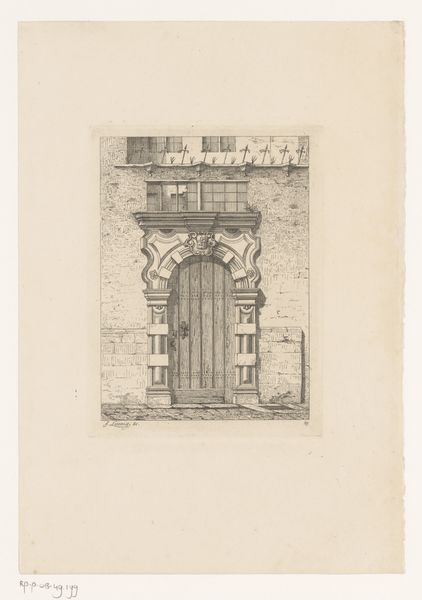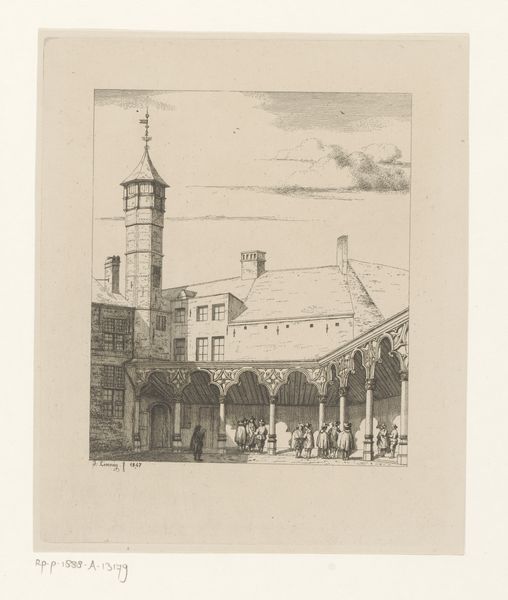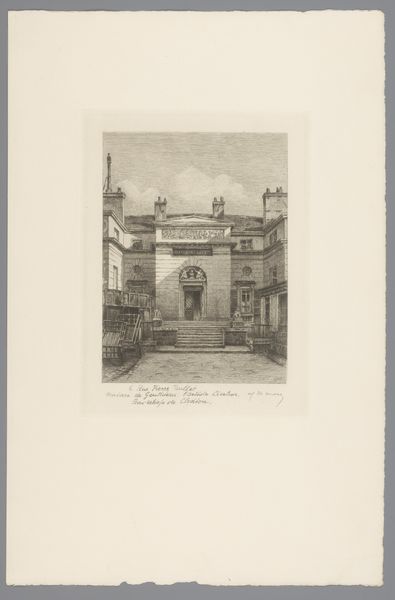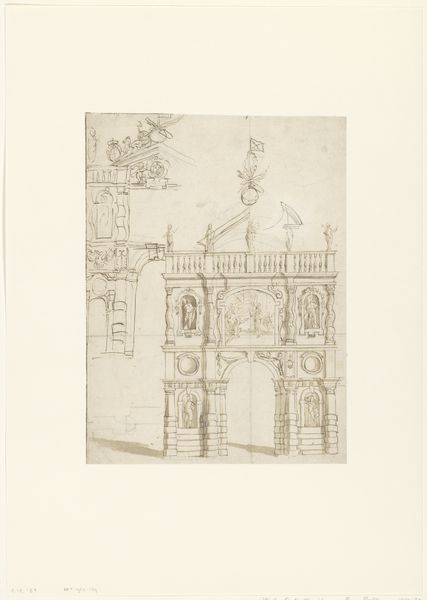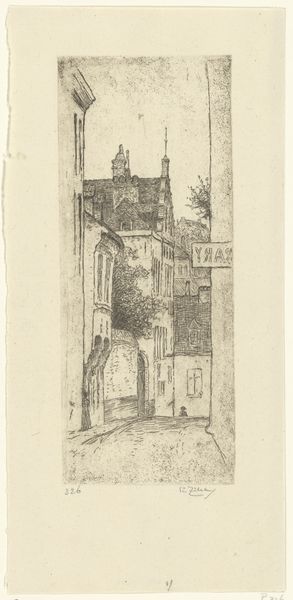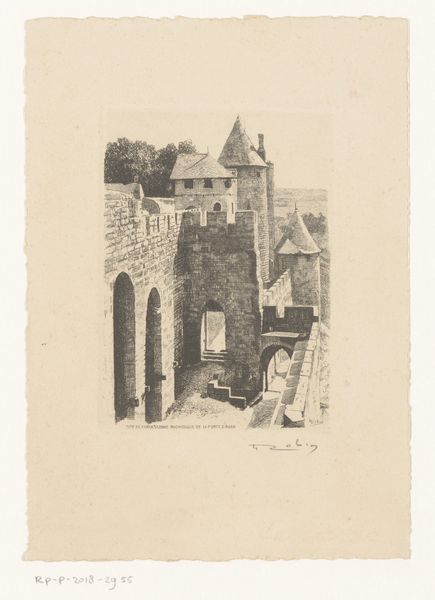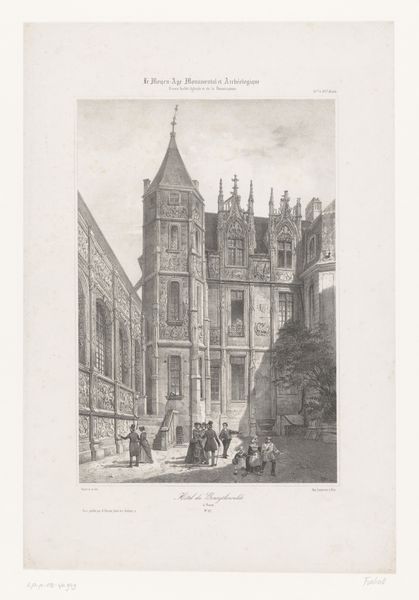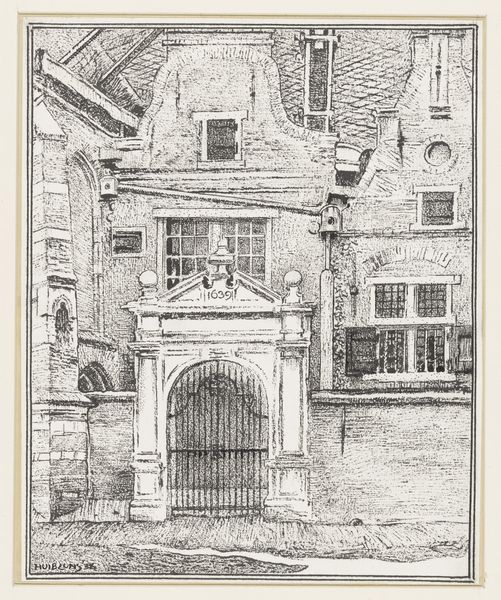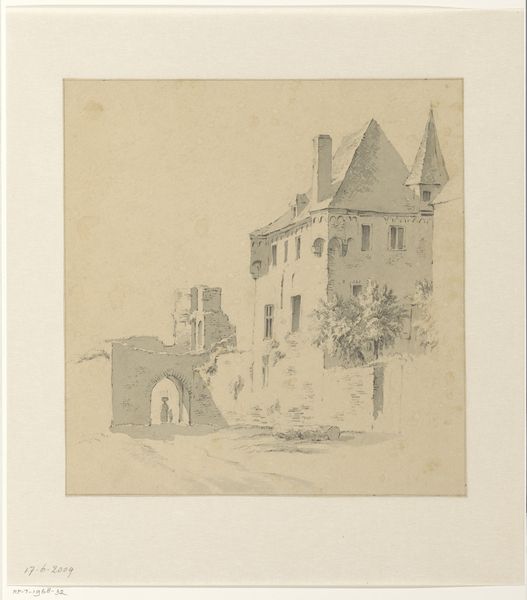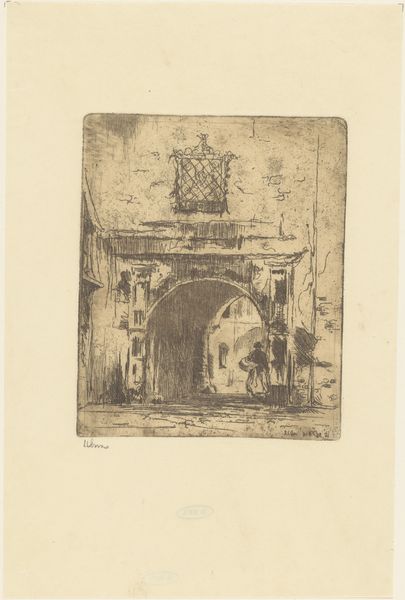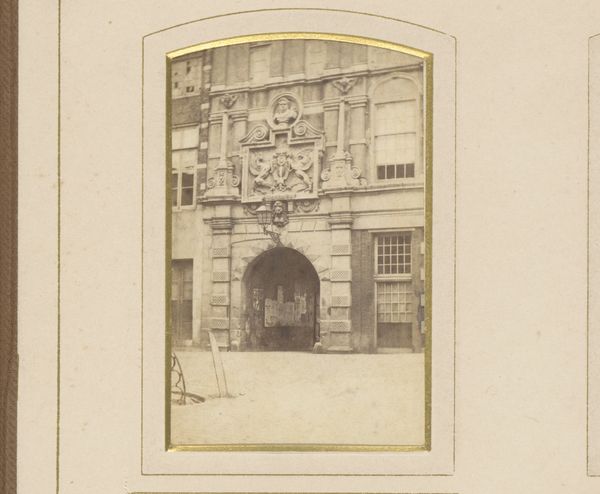
drawing, print, etching
#
drawing
#
dutch-golden-age
# print
#
etching
#
landscape
#
etching
#
figuration
#
cityscape
#
realism
Dimensions: height 299 mm, width 211 mm
Copyright: Rijks Museum: Open Domain
Editor: This is Willem Adrianus Grondhout's etching titled "Enkhuizen," created sometime between 1888 and 1934. It gives me a quiet, contemplative feeling, like stepping back in time. What do you see in this piece, particularly with regards to its imagery? Curator: The etching presents a gateway, an entry point, doesn’t it? The gateway is a powerful symbol in art and myth. Ask yourself, what does a gate signify? Editor: Transition? A boundary? Curator: Precisely. It marks a threshold. Is it open or closed? Locked, even? The lone figure adds to this symbolism. Where is she going? Where has she come from? This is not merely a depiction of a city; it’s about access, permission, and perhaps even prohibition. Think about what ‘Enkhuizen’ represented during its Golden Age – a centre for trade, power, and possibility. Does this image echo or question that historical narrative? Editor: That’s interesting. I hadn’t considered the gate as anything more than architectural detail, but it really does shape the whole feeling of the print. Is it inviting, or foreboding? Curator: The light and shadow, too, play a significant role in conveying emotion, no? What does the subdued palette evoke in you? Do you feel welcomed into Enkhuizen, or kept at a distance? Consider how those contrasts shape the viewer's emotional journey through the image. Editor: It’s less of a celebratory entrance and more of a pensive pause. I see that now. Thank you. Curator: Indeed. Every detail – the gate, the figure, the light – speaks to the layered cultural memory embedded within a simple cityscape. This piece invites a slow, thoughtful reading. I enjoyed reconsidering Grondhout's technique in relationship to Dutch Golden Age traditions with you.
Comments
No comments
Be the first to comment and join the conversation on the ultimate creative platform.
